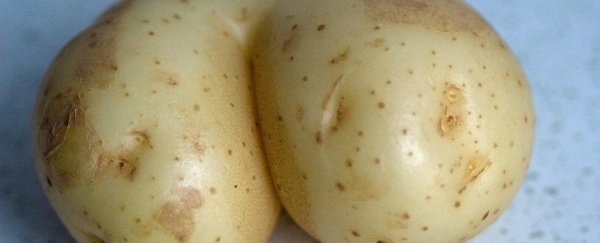Society must be pretty close to reaching peak bum obsession. We've written songs about it, invented a whole new type of selfie to show it off, and more than ever women are dressing solely to showcase their rear assets. But from an evolutionary perspective, what's the point of that big hunk of fat located at the back of our pelvis? And why are we so into it?
As the latest episode of How Did We Get Here by Australia's University of New South Wales (UNSW) explains, the bum can actually tell us a lot about our evolutionary past. For starters, the shape of our pelvis is something incredibly unique that distinguishes humans from our primate ancestors.
In fact, it's thanks to our broad and flat pelvises that we can walk stably along all kinds of terrain, as evolutionary biologist Darren Curnoe explains in the video above. Then, as our ancestors' brains and skulls began to expand, so too did their hips in order to allow our female ancestors to give birth.
This is the primary reason for the pronounced difference between males' and females' body shapes - women need bigger hips to be able to push out a human head. But skeleton aside, females also have a lot more fat around their buttocks, hips and thighs than men, which gives them the illustrious "junk in the trunk". So what's the point of that?
As Curnoe explains, the verdict is still out on exactly why bums evolved to be so large on women. But one leading theory that dates back to the days of Charles Darwin is the idea that females' bums are a sexually selected trait.
Sexual selection is a powerful evolutionary force across the animal kingdom - the basic idea being that males and females will prefer certain traits that are linked to fertility or parenting ability, and will actively mate with individuals with these traits over others. This means that these traits will have a higher chance of being passed onto the next generation.
But do bums have any benefit when it comes to fertility? In humans, the two aren't definitively linked, but in our chimpanzee cousins, a disgorged and distended rear-end signals that a female is in oestrus, which means that she's ready and willing to mate.
In humans, the oestrus process is hidden and happens internally, which makes us extremely unusual among mammals. But it could be the case that deep down, many males still associate a large bum with fertility.
There may also be another good reason that women's bums are shaped the way they are, and it has to do with the size of the human penis, and our willingness to have sex any time of the month. We'll let you watch the video to find out more, because it's pretty fascinating stuff, and don't forget to subscribe to see new episodes of How Did We Get Here as they come out.
Love science? Find out more about the ground-breaking research happening at UNSW Science.
